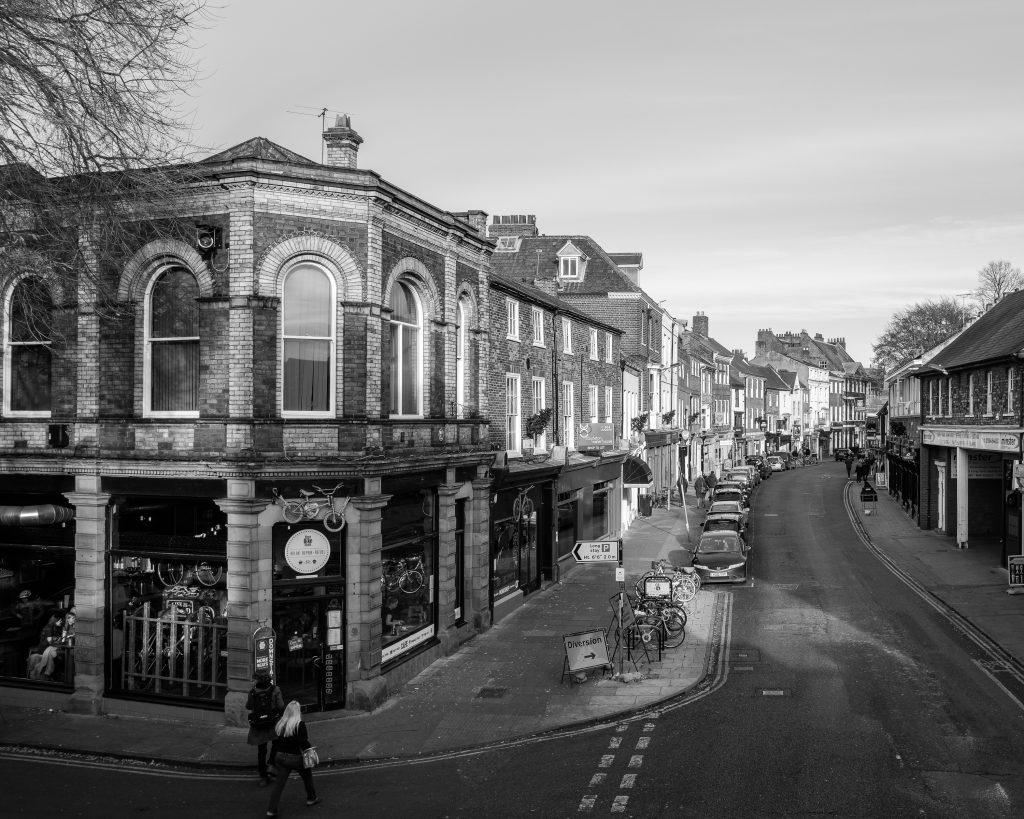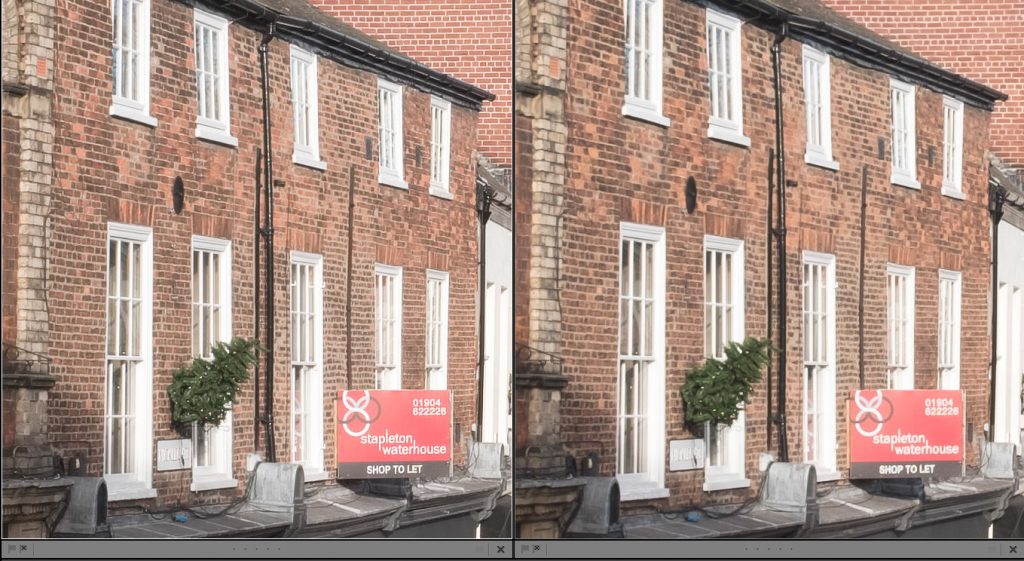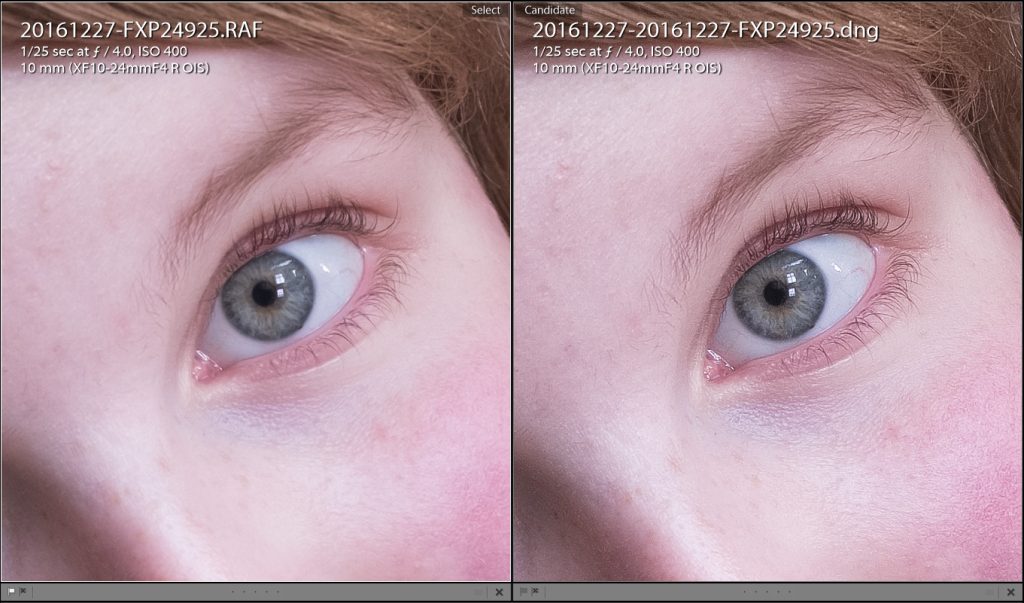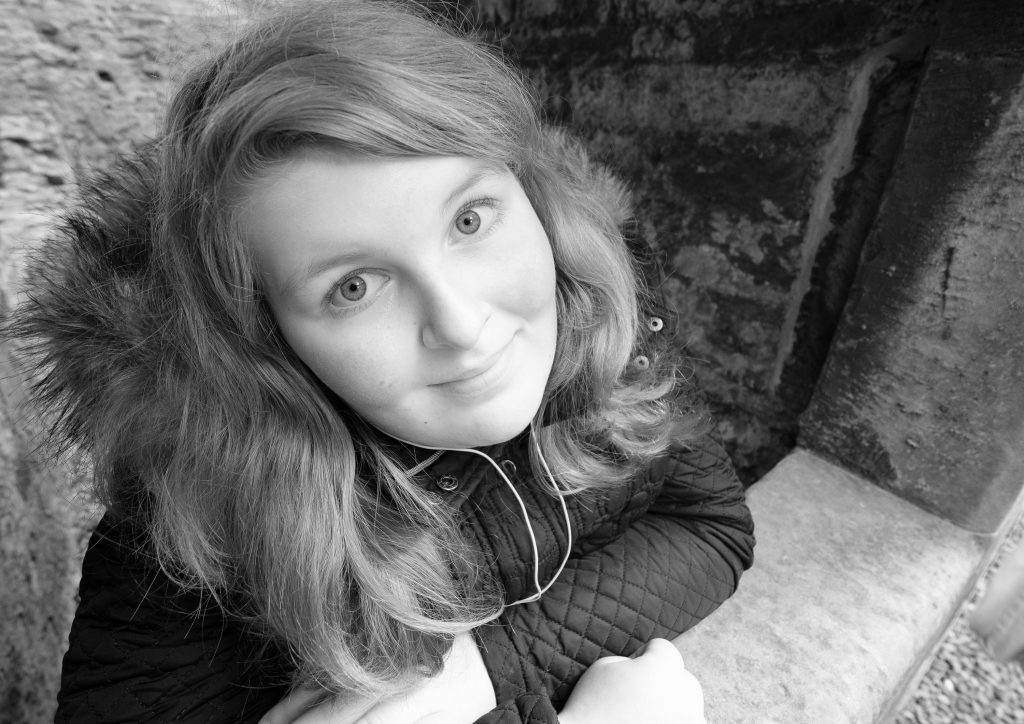
Just over a year ago I wrote about using a then new piece of software called Iridient X-Transformer which dramatically improved my results when processing photos from my Fujifilm X System cameras.
Back in January 2017 Iridient X-Transformer was in beta testing but the results were impressive enough for me to purchase the software right away.
Since then I have been using X-Transformer on a photo by photo basis where I think it will be of most benefit to the image.
I’m now beginning to think that I should just run all my Fuji photos through X-Transformer regardless. Why? Have a look at the screen shot below. This is one small section of a photo I took in York back in November, looking along Micklegate from Micklegate Bar. It’s not a great photo, I didn’t bother to process it at the time and I’m just using it as an example here. Click on it to see it at 100% or I doubt you’ll be able to see what I’m talking about and particularly look at the lettering on the red “shop to let” sign, but also at the brickwork and the little Christmas tree.

Which looks better / sharper / clearer / better defined to you? The image on the left or the image on the right?
To my eyes the version on the left is the clear (and clearer!) winner. No surprise then that the version on the left is the .dng file processed through X-Transformer whereas the version on the right is the default .raf imported by Lightroom.
I was originally planning to run all of my Fuji photos through X-Transformer as I stated in that original blog post but then I noticed how much more disk space the .dng file took up compared with the .raf file. In the case of the example shown the .raf file is 24.4MB, the .dng is 66.7MB. This photo was shot using my X-Pro2 and I use a (losslessly) compressed raw format so the .dng version is always going to be much larger as that compression is removed during the process of converting to .dng.
I am now thinking that it would better to accept the greater file size and just process everything I shoot on a Fuji camera (99% of my photography) through X-Transformer. I likely wouldn’t have used it to process this photo as I wouldn’t have viewed it as containing lots of intricate details – just a normal (and rather dull and uninteresting) street scene.
The difference is clear so I think it’s time for another change to my workflow. Process everything through X-Transformer before importing into Lightroom and I might as well stop using that compressed Fuji raw format on my X-Pro2 as there will be no benefit if converting to .dng anyway. Yes, the photos will take up more space but that might be a good incentive for me to be more ruthless with my “pruning” during the editing process.
I dont think this is “pixel peeping”. I think that Lightroom’s de-mosaicing of Fuji raw images is substandard and I’m not getting the full benefit of the image quality my Fuji cameras are capable of providing.
Adobe should be doing way better than this. I pay a subscription to use Lightroom, it’s not “cheap”. X-Transformer currently costs just £23.75 and is produced by a small, independent software developer. I do wish they produced their full Iridient Developer package for Windows, I’d be highly likely to switch from Lightroom.
I have considered and tried using Capture One and again the results are way better than Lightroom but at the moment I would rather not spend hundreds of pounds on new software and I don’t know how many hours learning to use it. I know Lightroom pretty well and get along with it fine, if I pre-process my photos with X-Transformer I can then just carry on as normal with Lightroom. I just wish to heck that Adobe would do something about its treatment of Fuji files. Good job Iridient are there to step in where Adobe fall short.


